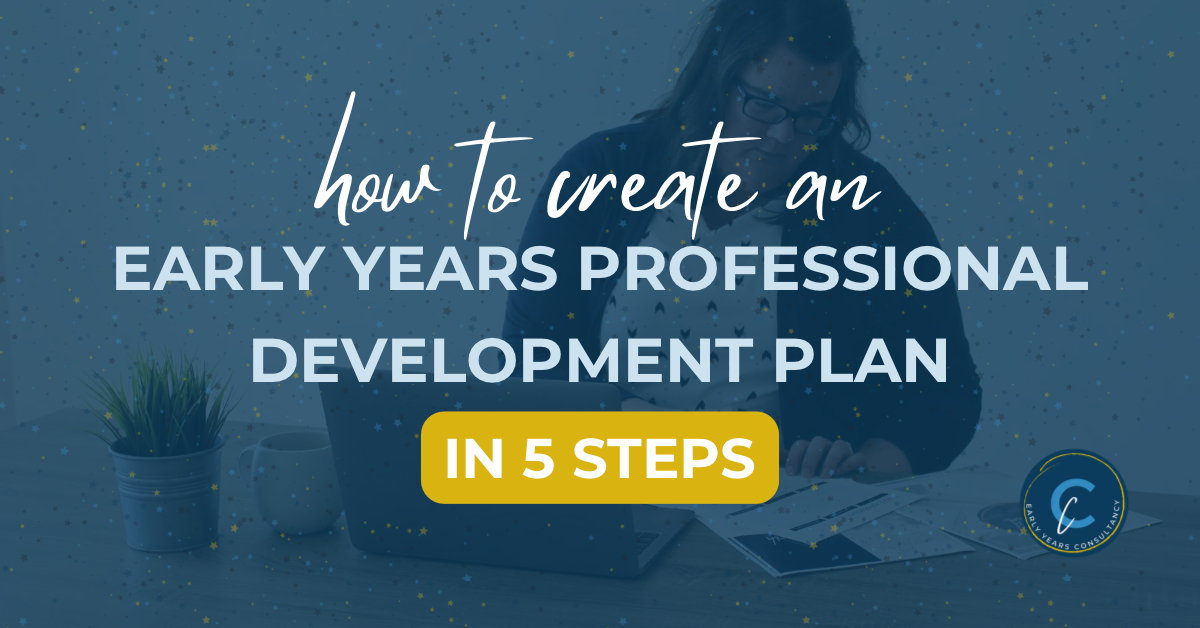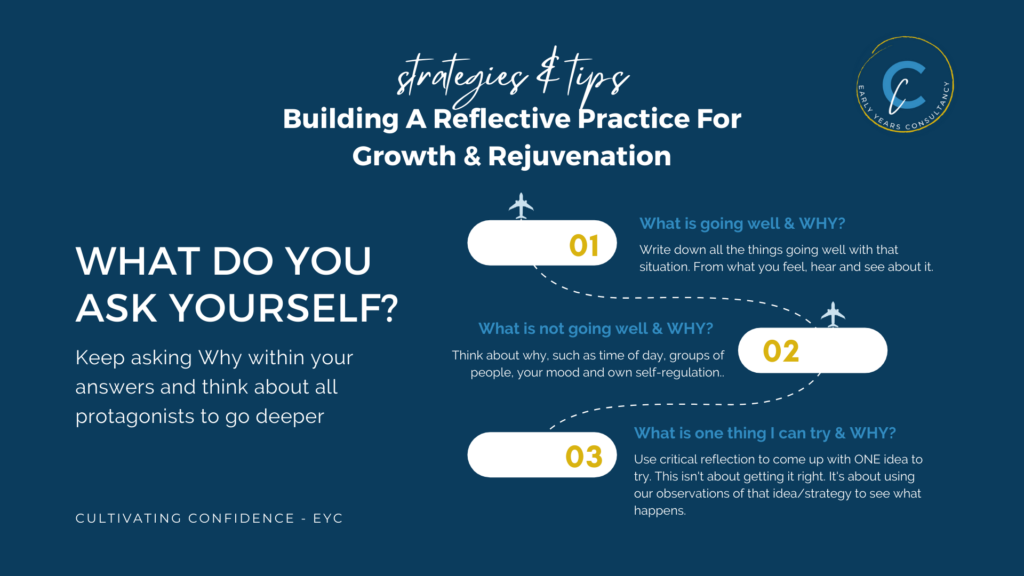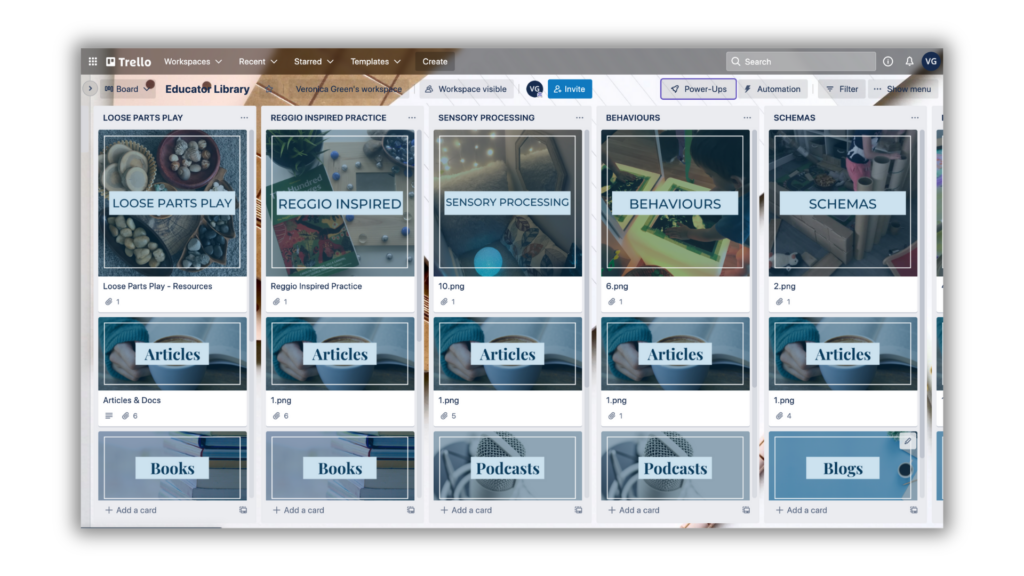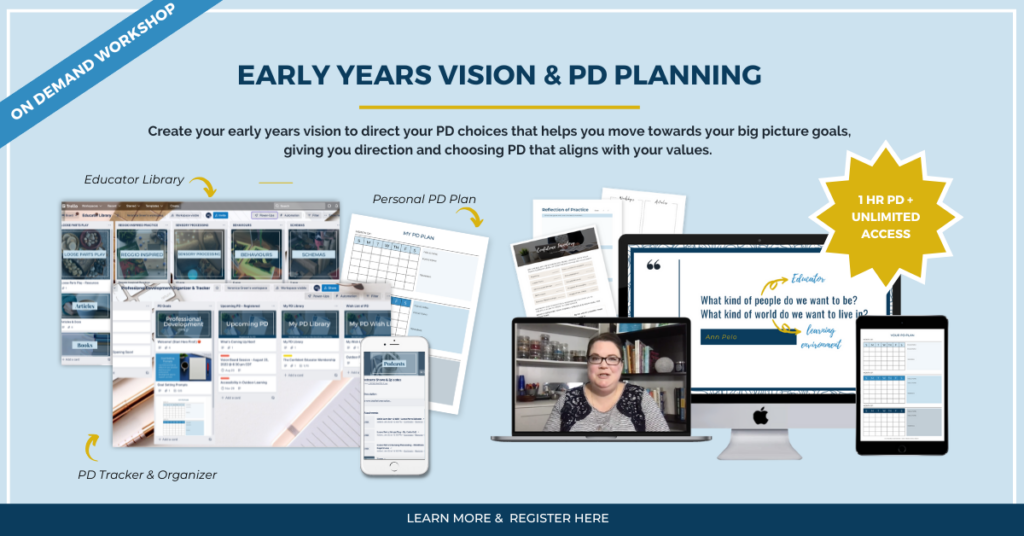CLOSE
inspiring you is my passion
REGGIO INSPIRED PRACTICE GUIDE
CONTACT VERONICA
LOOSE PARTS PLAY GUIDE
FREE RESOURCES
PROFESSIONAL TRAINING
FOR ECE'S
FOR TEAMS
from my perspective
this way to the blog!
TOOLKIT
Documentation
Templates
WORKSHOPS
CUSTOM TEAM BUNDLE
FREE TRAINING - POSSIBILITIES OF LOOSE PARTS
shop
CLOSE
inspiring you is my passion
EDUCATOR LIBRARY
CONTACT VERONICA
FREE LOOSE PARTS GUIDE
RESOURCES
PROFESSIONAL TRAINING
FOR ECE'S
FOR TEAMS
TOOLKIT
Documentation
Templates
WORKSHOPS
DIGITAL PD LIBRARY
LIVE WORKSHOPS
FULL DAY PD
FREE TRAINING - POSSIBILITIES OF LOOSE PARTS
New!!!
shop

inspiring & practical ideas
GET STARTED WITH
loose parts play
FREE DOWNLOAD
This guide is loaded with ideas, inventory lists, and resources to support you in conveying the learning that is happening while children play!
I only want creativity filling your inbox, so you'll see inspiration and support dropping in...but not too much!
We respect your privacy. Unsubscribe at any time.
Without knowing how to create an ECE professional development plan, you might miss out on opportunities to utilize your strengths to grow in your practice and solve the daily struggles of being an ECE. Instead, you might spend time buying courses that sit untouched, sign up for anything that is ECE related but it doesn’t actually help you or frantically searching for workshops to meet licensing requirements.
You were told you have to take a certain # of PD hours but nobody taught you how to create a PD plan. Professional development isn’t only about meeting government requirements and racking up hours of training. PD should inspire and challenge you in your practice but also help you solve problems.
You’re in the right place! I created this 5-step framework to help ECEs build a meaningful and actionable professional development (PD) plan based on my research and experience over the past 10 years.
We’ll cover everything from reflecting on your practice to identifying what has been going well and not so well to strategically curating your next 3 months of PD. I’ll also give you some things to look out for along the way.
With this plan, you can stay motivated, reduce overwhelm, and feel more confident in your role as an educator. By focusing on your strengths and goals, a PD plan also rejuvenates your practice and helps you find the right community for inspiration and support.
Just follow the steps, and by the time you finish Step 5, you’ll feel confident and enjoy an inspiring 3 months of individualized PD that is based on your strengths, areas of interest and helping you to solve problems you are experiencing so that you can keep moving forward.
WHY CREATE AN ECE PROFESSIONAL DEVELOPMENT PLAN?
ECEs are often required to complete professional development hours, but PD is much more than checking a box. It’s an opportunity to:
- Reflect on your practice, the children, and families you support.
- Identify strengths and areas for growth to become a more confident educator.
- Gain clarity and reduce overwhelm by setting intentional goals.
- Stay motivated and inspired in your work.
Without a plan, PD can feel scattered and reactive. A well-thought-out PD plan helps you prioritize what matters most and ensures your efforts align with your professional goals and the needs of your learning community. It also keeps you on track during challenging days by reconnecting you to your “why.”
Ready to create your own plan? Here are the five steps to guide you.
STEP #1: REFLECT ON YOUR EARLY YEARS PRACTICE
Before you can curate a strategic 3 month PD plan, you’ll want to take your time with this first crucial step.
So, the first thing you need to do is spend time reflecting on your practice. Consider looking back at the last 3 months of your early years practice. Reflective practice is truly engaging in your own curiosities about your practice and going deeper by asking why. You can reflect on any aspect of your role but here are some areas to consider:
- Relationships with children, families and fellow educators (relationships are the foundation of your role as we are a caregiving profession)
- Your everyday role (what has brought you joy or where have you felt challenged?)
- The environment as the third teacher (the learning environment can contribute to behaviours, create a sense of belonging and become your co-teacher)
When you’ve written down a memory or thought then ask yourself why?
- Why do you think that happened?
- Why did it result in this outcome?
- Why is this significant in my practice?
- Why does this feeling keep coming up?
Reflective practice is a cornerstone of meaningful professional development. By understanding where you’ve been, you’ll have a clearer vision of where you want to go.

WHAT TO LOOK OUT FOR:
Many educators skip this foundational step and then wonder why they’re not moving from managing behaviours to understanding them and finding solutions. Don’t let that be you!
This is a crucial step that will set you up for success later on. Reflection helps you build a foundation for the rest of your plan. Don’t rush through it—it’s worth the time.
All done? Great job! Let’s move on to Step 2.
STEP #2: TAKE A PD INVENTORY
At this point, you’re probably thinking that this is taking a lot of your precious time and you just want to get the dopamine hit of taking a new workshop.
You may even be wondering, “Why am I doing this when I don’t even have much choice or a budget for PD?”
If you hang in there, it will be clear, promise. What we’re doing is pulling this all together into a strategic ECE professional development plan that will be specific to your early years role that inspires and challenges you.
One thing that may help is to create a cozy space with your fav drink, cozy blanket and fav music to create a mood that works towards your needs. Creating a PD plan is professional development in itself as it’s hard work.
Now it’s time to take a PD inventory of what you’ve done as knowing what you’ve already done is just as important as planning what’s next. Set a timer for 15 min and write down all the PD you’ve completed in the past year (or shorter timeframe if that is more comfortable for you).:
- Past workshops or courses you’ve taken.
- Resources you’ve accessed, such as books, podcasts, or articles.
- Any ongoing access you have to memberships or recorded sessions.
This inventory helps you identify gaps and avoid redundancy. It also makes your planning more intentional, so you can focus on growth areas without being overwhelmed.
Here are some tips to help you move through this step quickly:
- Consider creating a digital log of your PD so that you can refer back to what you’ve taken and not take the same topic/workshop over and over again
- Use an app like Notes and use Siri to easily keep adding to your list on the go
- Section your PD Inventory into topics such as books, podcasts, articles, webinars, etc., to stay organized

This is an example of how I organize my ECE professional development resources digitally using free software called Trello. It’s a project management system that allows me to organize and categorize all the amazing resources out there!
WHAT TO LOOK OUT FOR:
When I first started taking PD I had no plan and simply bounced from workshop to workshop trying to learn EVERYTHING. I flooded my brain and didn’t move forward in my practice at all. The workshops and training I’ve taken either focused on the same topic or it was all over the place.
If I had followed this framework earlier in my practice I would have seen this sooner when taking an inventory of the PD I’ve taken.
STEP #3: CONFIDENCE INVENTORY
Are you starting to get excited? I hope so. We’re just about there.
You may be feeling a bit overwhelmed, and that’s perfectly normal. Any time you’re trying something new, it takes a minute to process it. Just be patient and stay with it.
Next, take stock of all the areas of your role (play, relationships, environment, etc.,) and give yourself a ranking from 1-10 with 10 being 100% confident. Ask yourself:
- What am I confident in as an educator?
- What areas feel challenging or uncertain?
Understanding your confidence level helps you prioritize PD opportunities that will have the greatest impact on your practice. Building confidence isn’t about being perfect; it’s about knowing where you shine and where you’d like to
While you’re doing this, make a note of any gut rankings and feelings that come with them. This is your mind and body giving you individual insight into your early years practice. Confidence comes from trusting your gut without judgement. That feeling is something to trust and use to guide you.
Make any adjustments you need to make before you move on.
For example:
After you’ve done a first round of ranking your confidence in the different areas of your role, take a moment to go back and look at your reflections from step 1 for any connections or differences. Of course you may want to ask yourself why…especially if there are disconnects.
If you want, you can get a step by step training to help you develop a clear PD plan based on your personal practice and needs. I created this training to help you curate 3 months of PD that supports you to achieve your goals without staying stuck in the same problems.

Click here to learn more about the training, Early Years PD Planning so you can get started.
WHAT TO LOOK OUT FOR:
It may be hard to rank your confidence in these different areas. What you can do is avoid being overly critical or focusing only on weaknesses. Celebrate your strengths and use them as a foundation for growth.
STEP #4: USE YOUR PERSONAL STRENGTHS
We’re just about done. There are just two more steps.
Here’s what to do next:
Reflect on your early years practice as a whole. Think about:
- Your unique strengths and interests (this doesn’t only have to be ECE related… for example photography, editing, crafting, cooking, art)
- The areas of support you’ve identified.
- How your personal strengths can guide your professional growth.
How could you nurture one area of support along with your strengths? Tailoring your ECE professional development plan to your strengths and interests ensures it feels meaningful and sustainable. For example, if you’re passionate about sensory play, consider PD opportunities that deepen your understanding of this area.
WHAT TO LOOK OUT FOR:
No matter what you do, don’t get on the comparison wheel and start looking at what everyone else is good at and only focusing on your areas of needs.
If you do, you’ll only risk getting stuck and lowering your confidence. So just stay focused on your early years practice and remember that everyone has their own unique strengths and you are not required to be perfect in all areas of your role. As Sophia Amoruso says, “True success lies in knowing your weaknesses and playing to your strengths.”
Keep going! You’re nearly there.
STEP #5: CREATE YOUR ECE PROFESSIONAL DEVELOPMENT PLAN FOR THE NEXT 3 MONTHS
This is the last step. Get ready to celebrate!
Now it’s time to map out your PD goals. Using the insights from Steps 1-4, decide:
- What topics/areas of interest to prioritize.
- How you’ll engage with those opportunities (e.g., attending a workshop, reading a book, or joining a webinar).
- When and how you’ll dedicate time to PD.
Focus on the next three months to keep your plan actionable and achievable. Revisit and adjust your plan regularly as your needs and interests evolve.
WHAT TO LOOK OUT FOR:
Professional development is very personal as it is most beneficial when it aligns with your learning style and needs. This plan is designed to guide your thinking and keep you moving forward. There isn’t only one way to make a PD plan, so make it your own!
I’ve found over the years that having a curated ECE professional development plan around my personal practice has helped me to stay inspired, supported and solve challenges. This has ultimately helped me be the kind of educator that I want to be and this is what I hope for you too.
BONUS: DIGITIZE YOUR ECE PROFESSIONAL DEVELOPMENT JOURNEY
And finally, here’s a Bonus Tip just for you!
Document your plan in a journal, planner, or digital tool. Having a written plan makes it easier to stay accountable and track your progress.
This is something I started doing after many years of trial and error, and it has helped to stay organized, use my precious dollars efficiently and return to PD that has been very impactful on my early years practice.
KEY TAKEAWAYS
Building an ECE professional development plan doesn’t have to be overwhelming. By following these five steps, you’ll create a plan that reflects your strengths, aligns with your goals, and supports your growth as an ECE. Remember, PD is about more than completing hours—it’s about staying connected to your “why” and finding inspiration in your work.
I’ve given you all my best tips, tools, and techniques to help ensure your success. Just knowing them isn’t enough, though. It’s time to act and get the results you’ve been dreaming about!
Are you ready to take the first step? Reflect on your last three months and start building your plan today!
Hey there!
I'M VERONICA
I am an Early Childhood Consultant and very passionate about supporting and inspiring my fellow Educators. I will share my reflections and experiences about implementing my philosophy, views, and ideas into my practice.
COFFEE & BOOK LOVER
find more on
stay connected
How to Create an ECE Professional Development Plan in 5 Steps
Leave a Reply Cancel reply
ENDLESS POSSIBILITIES OF
loose parts play
ON-DEMAND FREE TRAINING
Unlock the possibilities to simplify your planning, become proactive with behaviours & enjoy your role again! I'll guide you to find the beauty in loose parts play.
DISCOVER THE POSSIBILITIES!
I'M VERONICA.
EARLY YEARS CONSULTANT
Here to help you simplify planning, understand behaviours & build strong relationships...all with the magic of loose parts!
ENGAGE YOUR CURIOSITY
MY EARLY YEARS JOURNEY
THE MODERN EDUCATOR TOOLKIT
WORKSHOP (LIVE & REPLAYS)
CUSTOM TEAM PD BUNDLE
POSSIBILITIES OF LOOSE PARTS TRAINING
CONTACT
get your
guide!
Wanna know how to GET STARTED with these magical materials?
find out right here!
back to top
WEEKLY EMAIL
join the
let's stay connected...
Only inspiration & support will drop in your inbox. Unsubscribe at anytime.
CLOSE
I'M VERONICA.
Here to help you simplify planning, understand behaviours & build strong relationships...with the magic of loose parts!
VERONICA
POSTED BY:
also known as Ronnie!
SPECIAL NEEDS MOMMA &
EARLY CHILDHOOD CONSULTANT
Inspiring and mentoring my fellow educators how to use loose parts to enhance all aspects of their practice. I share my dual roles of educator & momma and how our autistic son has shown me so many new perspectives.
read about my early years journey